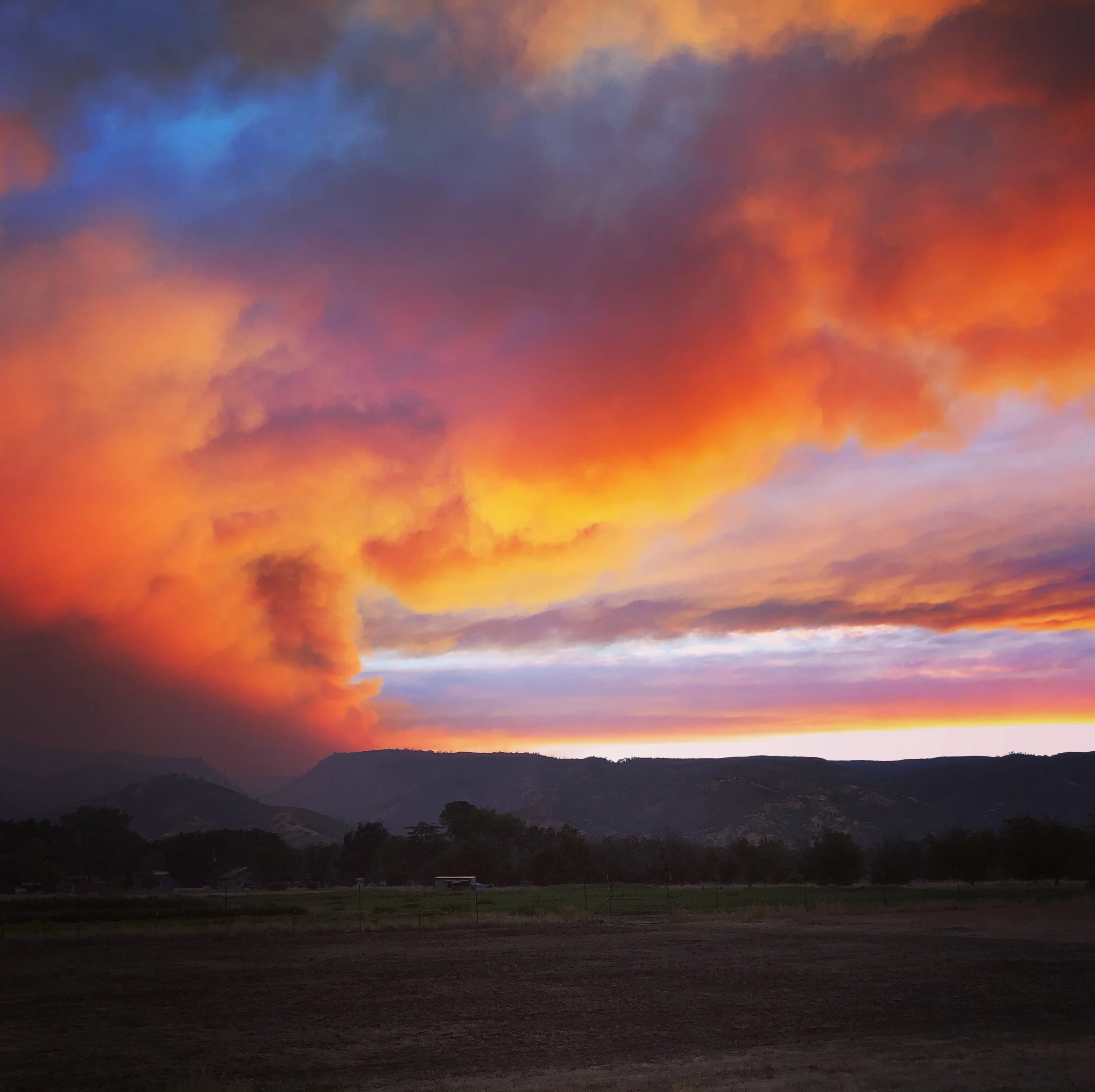Originally published in the Napa Valley Register.
I believe all Californians can agree that “relentless” is the best description of this summer’s fire season. After a brief respite from a horrifying August and September, once again Californians wake up to more wildfires ravaging our beautiful state, and in particular Napa and Sonoma. Although my farm is an hour from Napa, my heart is in its community, and I share the same experiences and trauma from living in a fire-prone landscape.
A few weeks ago, the Eastern edge of the LNU Complex fire came within a mile of our farm in Guinda. The 12-mile stretch of Capay Valley had no Cal Fire resources, but the fire was contained through the teamwork of the local volunteer fire department and neighbors. Despite our farm being saved from fire, we then faced weeks of harvesting in dangerously unhealthy air, with power shut-offs, smoke that slowed our crop production and a canceled farmers market. Of course, all this is nothing compared to the lives and homes lost by so many this year.
Every summer Californians face fire-related trauma, and now it is not just affecting rural communities. For years we ignored science and delayed making the necessary sacrifices to halt climate change, and now it is too late. Our state will burn, every year more hot and violent. Climate change holds the reigns of our future, and we can no longer hope to reverse it unless we are compelled. But how?
Farmers are the front-line soldiers of climate change. Not only does it directly affect our livelihood and health, but we also are one of the main wielders of power to reverse climate change. We cannot do it alone and without your support.
Here are a few direct ways you can help farmers and our environment:
— Buy local.
— Buy everything you can at your local farmers market or at local businesses.
— Be willing to pay more. Cheap food and produce typically reflect unsustainable farming practices and industrial processes.
— Help your farmers and food vendors to reduce the use of plastic. Instead of buying a plastic tub of lettuce at the grocery store, buy a head of lettuce at the farmers market, put it in a basket you bring (not a plastic bag), wash it at home and store it in your salad spinner.
— Learn about your food. Where was it grown, how was the meat raised, and what farming practices were used to produce it?
— Donate money to your local food shelters, food aid programs and farmers markets. These organizations work directly with farmers to get healthy and sustainable food to all people.
We need to become a society that makes real change in our daily lives and in how our elected officials prioritize climate change. We must prioritize prevention over reaction. And we must decide whether we are willing to sacrifice our future for the conveniences of a society that takes more from the environment than it gives back.
To inspire you to come to the Napa Farmers Market and to end on some good news, I’d like to remind you that October is winter squash season. So many vendors at the Napa Farmers Market grow unusual and delicious varieties of winter squash. You can bake these squashes, boil them, mash them, eat them sweet, eat them salty, eat them hot or even cold.
At Sun Tracker Farm we grew seven different kinds of knobbly, weird and tasty squash. I encourage you to visit all the farm stands at the Napa Farmers Market over the next few months and try every kind the market has to offer.
Kabocha Squash Curry
Here is an easy and lovely kabocha squash dish that the whole family will love. Serve with steamed rice.
1 tablespoon vegetable oil
2 yellow onions, diced
2 sweet peppers, diced
3 carrots, diced
1 medium kabocha squash, peeled and cut into 1-inch cubes
3 garlic cloves, minced
1 tablespoon minced fresh ginger
1 tablespoon brown sugar
½ cup red lentils
1 can (13-ounce) unsweetened coconut cream
1 teaspoon soy sauce
1 teaspoon fish sauce (optional)
1 to 3 teaspoon red curry paste
Juice of 1 lime
¼ cup chopped cilantro or Thai basil
In a large, heavy pot, heat the oil over medium heat. Add the onions and cook until lightly browned. Add the peppers, carrots, squash, garlic, ginger and brown sugar. Mix and cook 1 minute. Add the lentils, coconut cream, soy sauce, fish sauce and enough water to barely cover the ingredients. Mix well, cover and simmer until the squash and lentils are cooked, 15 to 20 minutes, stirring every 5 minutes and adding water as needed if the curry is too thick.
Stir in curry paste to taste and more soy sauce if desired. Top with lime juice and chopped herbs.
Serves 4.
